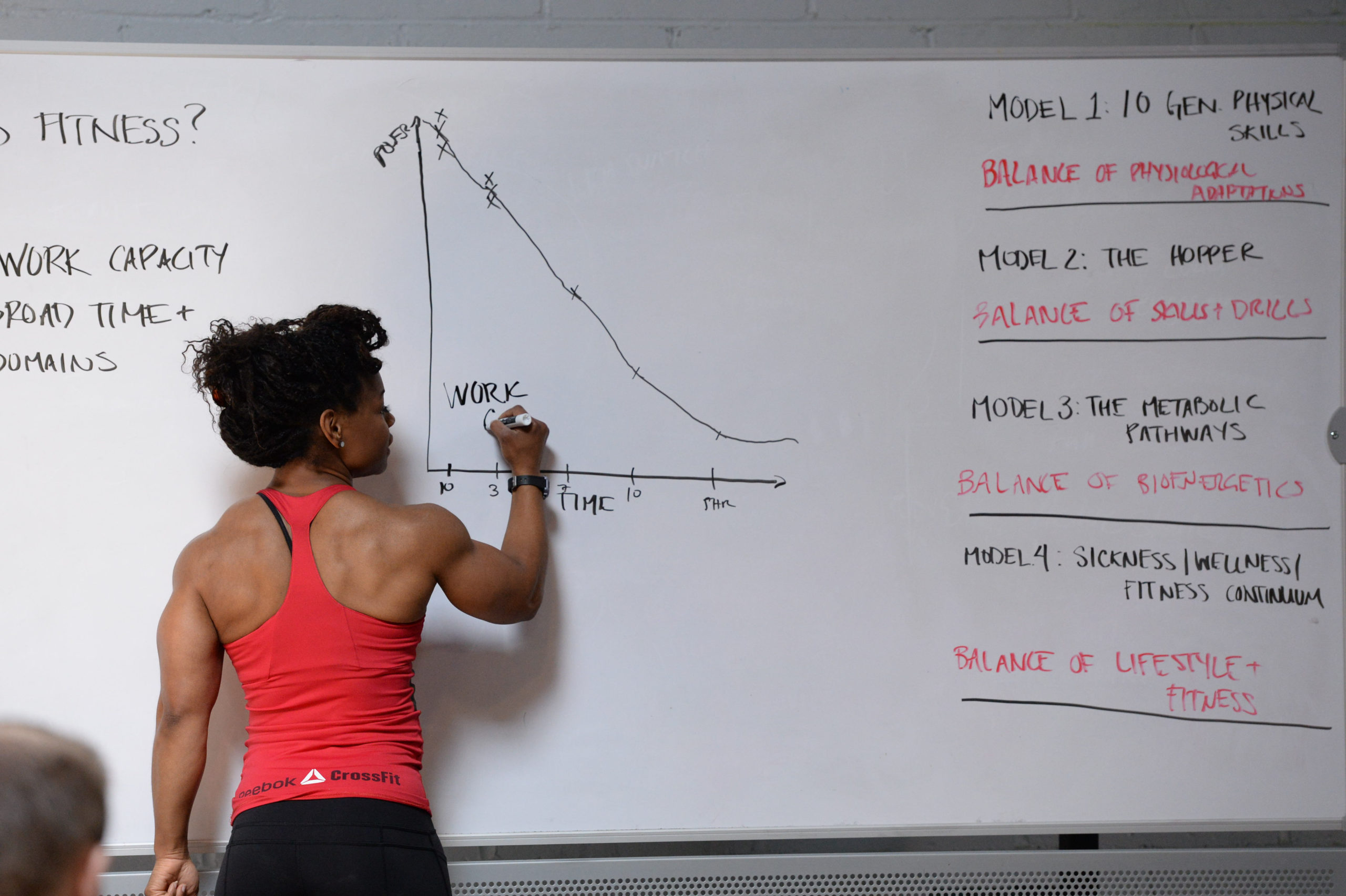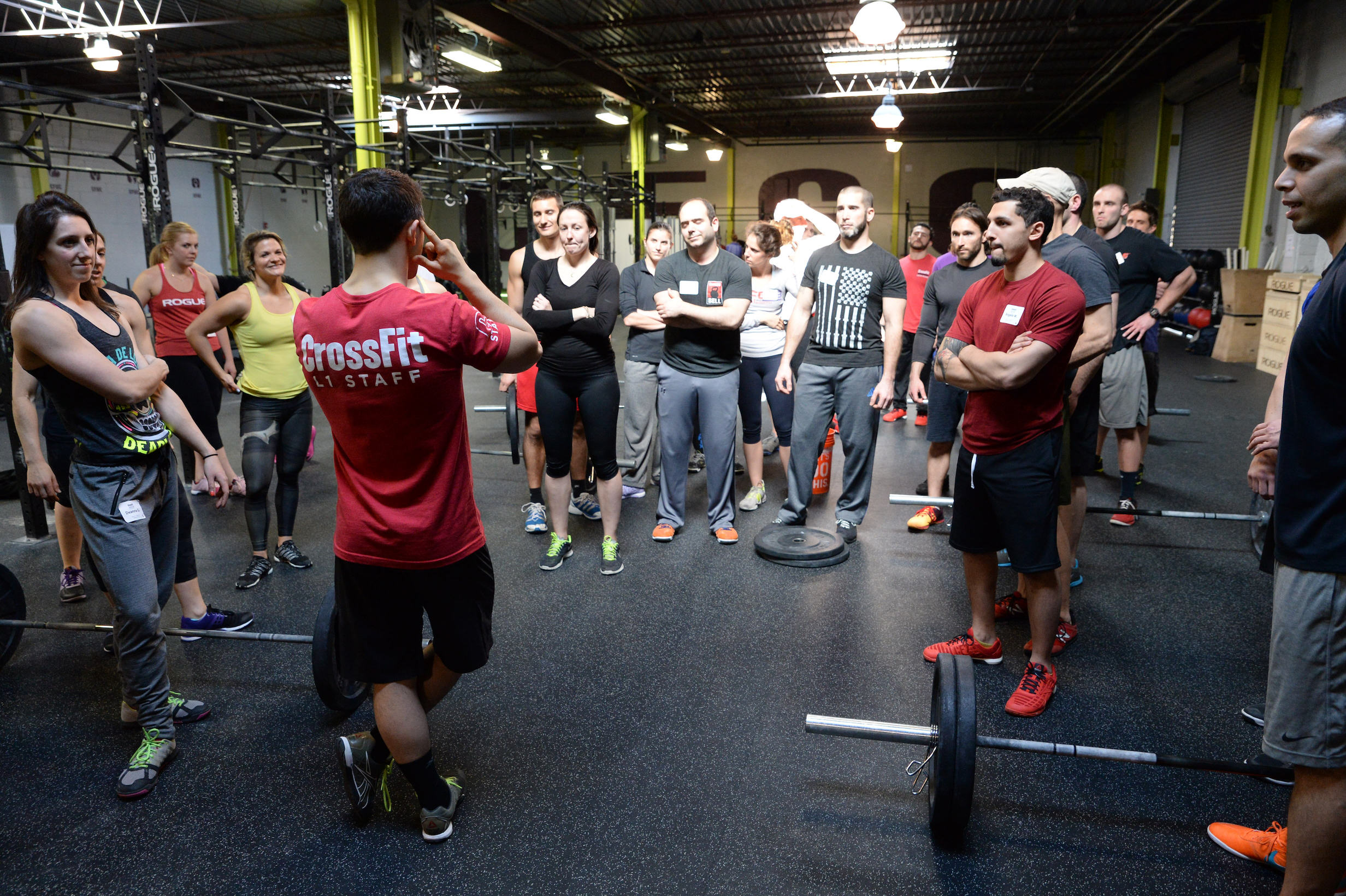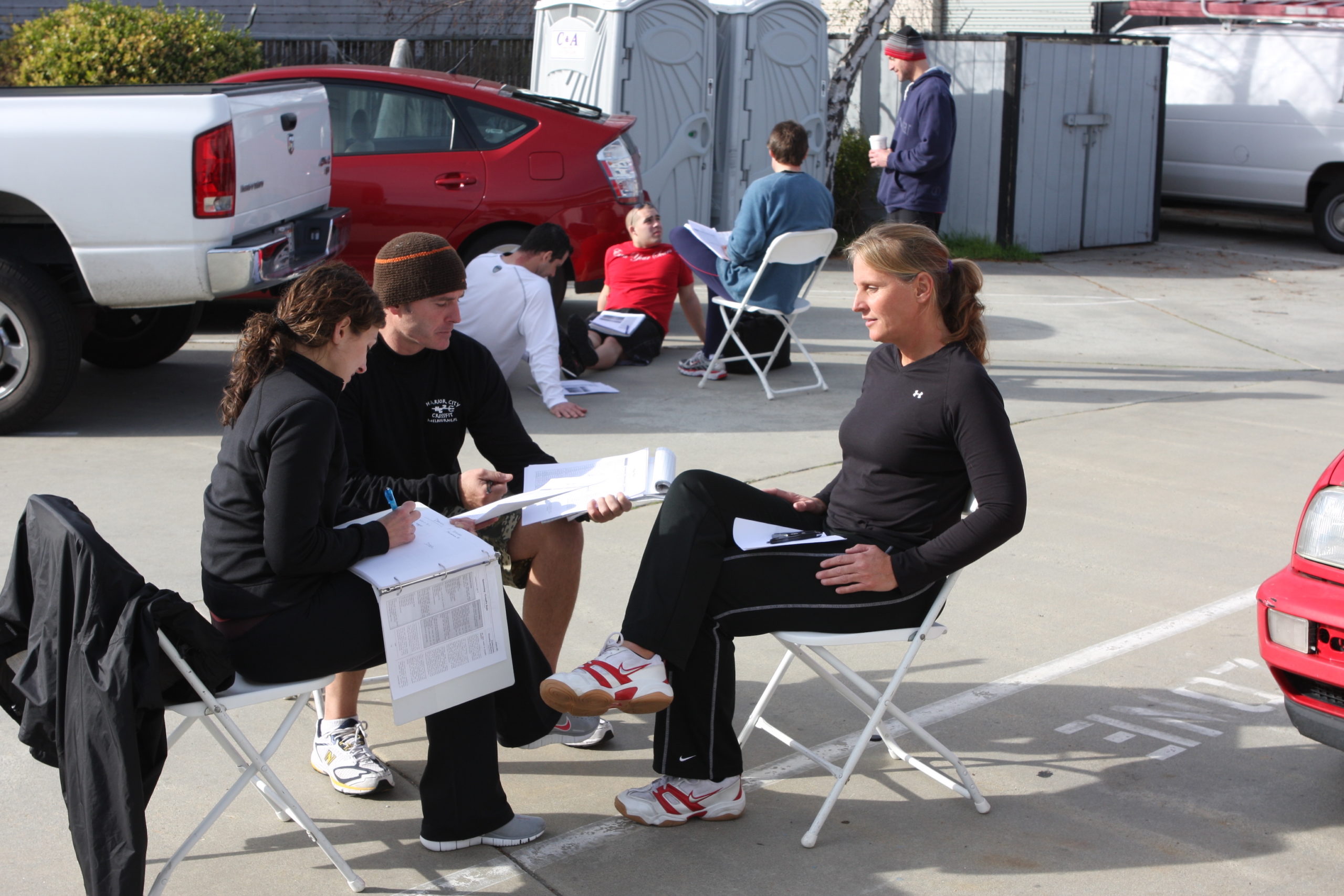You click open a new email from CrossFit. It reads:
“Your CrossFit Level 1 Trainer (CF-L1) credential is about to expire. To keep your CrossFit trainer credential current, you must revalidate your certificate prior to its expiration. An alternative option is to earn the Level 2 Trainer (CF-L2) credential.”
Further on in the email, there are links to register to revalidate your L1 — or to register for the L2.
“I’m no expert coach,” you think, mousing over to the revalidation link.
HOLD UP.
Think of how far you’ve come as a CrossFit athlete. How much you’ve learned; how much you’ll continue to learn over years of pursuing virtuosity in fitness. What if you took the same approach to your skills as a coach?

Your coaching journey begins with the Level 1 Certificate Course.
The More You Know
The CrossFit Level 1 Certificate Course is the base requirement for anyone wishing to train others in CrossFit. It “provides an introductory education on the fundamental principles and movements of CrossFit” and “is the starting point for anyone seeking to improve their health and fitness through effective training and nutritional strategies.”
But just as the air squat is the foundation — not the end point — of exceptional fitness, the Level 1 is only the beginning.
Eileen and Neil Pallotta are trainers at CrossFit Nassau in Monmouth Junction, New Jersey. Though the married couple have only been coaching there for a handful of months, the duo boast a combined two decades’ worth of CrossFit experience as both athletes and trainers, and have coached at six affiliates around the world as they’ve traveled for Neil’s military career. They also are each Certified CrossFit Level 3 (CF-L3) Trainers, the second-highest credential offered by CrossFit.
And they keep coming back for more.
“Like everything with life, the more you know, the more you realize you don’t know,” Eileen said.
The pair earned their Level 1 credentials in 2010, following with the CrossFit Level 2 Certificate Course nine years later in 2019.
“It was so much different than the (L1) because it was more applicable,” Eileen said of the L2, a two-day, in-person course in which participants lead individual and small-group sessions under the review of peers and CrossFit Seminar Staff Trainers. “You get more experience and real feedback on your coaching.”
It’s that very experience that scares some away from the course, intimidated by the prospect of being evaluated publicly by CrossFit’s top trainers. But just as athletes once afraid to so much as step into a CrossFit affiliate soon learn it’s a safe space to learn from failure, trainers can rest assured no one will be booed out of the gym at a Level 2 course.
“Putting yourself out there is always intimidating,” Eileen said, “but the more you put yourself out there, the more you learn. … It was not long before everybody realized that this was a safe place.”
That doesn’t mean you won’t receive constructive criticism.
“For me, it was (an experience of) being humbled,” Neil said. “They can always find something for you to improve upon.”
Another benefit of the Level 2 is the opportunity to learn from peers.
“As you get better at coaching and more experienced within your community — and if you are a decent athlete yourself and move well — people stop coaching you,” Neil said.
And no matter how good your peers are at your home affiliate, trainers can always benefit from a fresh perspective.
“It’s easy to get complacent or easy to kind of forget about wider views,” Eileen said. “Going to the certification … you’re exposed to stuff that you don’t see every day. You’re going to be reminded of issues that you kind of forgot about.”

Learn from peers and CrossFit’s top trainers at a CrossFit certificate course.
Pursuing Virtuosity
Continuing education is valuable, the Pallottas said, regardless of whether you view yourself as a career trainer or not. It doesn’t matter how many hours you teach; when you step onto the coaching floor, you’re the coach.
“It’s a responsibility to wear that title, in my opinion,” Neil said. “You have to earn it all the time.”
CrossFit trainers teach their athletes to pursue virtuosity in movement, whether their goal is to compete at the CrossFit Games or move safely from sitting to standing. And athletes expect their trainers to do the same.
“I think that at least half the battle of coaching CrossFit is living the lifestyle,” Neil said. “A saying that I heard that I really like is ‘Don’t practice what you preach; preach only what you practice.’”
Pursuing continuing education as a trainer, he continued, “holds you accountable to all the people that you’re coaching — and thereby it makes you better.”
“Look at it as an investment in yourself,” he added. “And not only will you benefit, but all the people that you get to coach and be in front of will also benefit from that investment in yourself.”
Justin Doran — owner of CrossFit Nassau and a CrossFit Level 2 Trainer in his own right — agreed, adding that higher credentials can also make a prospective trainer more appealing to affiliate owners.
“It shows that they have, at the very least, a desire to dig a little bit deeper,” he said. “(Certifications are) not a guarantee of expertise, but … it at least is an indicator that somebody’s interested in actually furthering their knowledge base.”
Doran said that the Level 2 experience has also helped him improve as a mentor to his own coaching staff.
“I think if you sort of break down what it means to be a good coach … and what that looks like (and) what it doesn’t look like, I think the Level 2 does a really good job of articulating that,” he said.” And so that helps me both as a coach and as the owner of the gym that has the role of teaching other coaches how to go about their jobs.”

Never stop learning.
Back to Fundamentals
All three CrossFit Nassau trainers have ambitions to achieve CrossFit’s highest credential: Certified Level 4 Coach. But that doesn’t hinder their excitement to experience CrossFit’s more entry-level continuing-education opportunities, such as the newly released CrossFit Fundamentals course.
“It sounds like it’s a bridge for the athlete who really loves (CrossFit); may not ever want to coach but wants to learn more, and I think it’s a great way to be reminded of what it’s like to be that kind of athlete (and to) coach that kind of athlete,” Eileen said. “And you can never learn enough about the air squat.”
Neil agreed.
“It’s always back to the fundamentals,” he said of continuing education in CrossFit. “And then once you earn that certificate, it’s not like, ‘Oh, now I can take a breath. I made it.’ It’s when it really begins.”
Cover photo by RXd Photography
About the Author
Brittney Saline is Senior Writer and Editor for CrossFit, LLC. Previously, she was a writer and editor for the CrossFit Journal. She’s been sharing powerful stories from and for the CrossFit community since 2012, covering topics ranging from problems with healthcare and Big Pharma to CrossFit’s potential for reversing symptoms of Parkinson’s disease to discourses on femininity and musculature. She lives in Minneapolis, Minnesota, and her favorite CrossFit workouts feature lots of heavy lifting. Got a story to share? Email Brittney here.

Why Every CrossFit Trainer Should Level Up